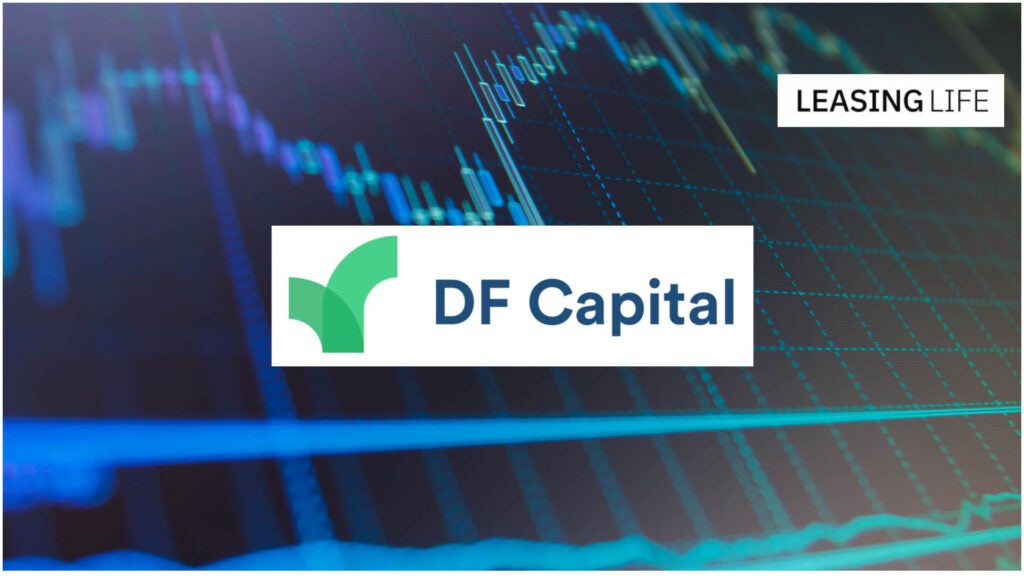
With increasing banking regulation and reserve capital requirements causing bank lending to drop, asset finance providers are having to look to pastures new for their funding needs, as Mike Cobb reports
The asset finance markets have been experiencing some of their highest-ever levels of growth in recent years. And with the economy in the Eurozone, UK and US recovering from a series of financial shocks, the industry looks set to see steady-to-strong growth in the foreseeable future.
The success of such activities has been somewhat in spite of, rather than because of the current credit environment, though. The collapse of Lehman Brothers in 2008 led to banks being more cautious in their lending and the conduits to finance for lessors from market leaders such as Lombard down to companies with small sub-£50m (62m) portfolios have barely got any easier to find since.
Some of the measures taken across Europe’s regulators to ensure that banks are able to keep on lending without the risk of collapse have in their own way contributed to the problems finance companies have had in accessing funds through traditional routes.
Major lending banks such as the Royal Bank of Scotland, Barclays and even overseas institutions such as Investec and BNP Paribas all have to maintain a higher level of reserve capital to cover their loans than was the case in the credit-rich days of 2006 and 2007.
The situation is not restricted to the UK or France however; banking standards agreed across the EU and in other territories also put additional pressures on lenders, and in turn the finance companies that remain so reliant on a flow of funds.
According to John Leech, head of automotive at KPMG UK: "The banks are having to deal with, first, the recession and, more so, the upcoming Basel III requirements, which means that funding these sorts of assets is actually quite collateral-intensive. From a bank’s perspective they are not necessarily going to give a great return on capital." From his point of view, therefore, he is not sure that asset and car finance companies will ever see the large banks back as major lenders.
How well do you really know your competitors?
Access the most comprehensive Company Profiles on the market, powered by GlobalData. Save hours of research. Gain competitive edge.

Thank you!
Your download email will arrive shortly
Not ready to buy yet? Download a free sample
We are confident about the unique quality of our Company Profiles. However, we want you to make the most beneficial decision for your business, so we offer a free sample that you can download by submitting the below form
By GlobalDataChristian Roelofs a director in the Leasing, Asset & Consumer Finance team at Grant Thornton UK is not so sure, "I think some have come back, and that’s something that started mid to late last year" however their credit appetite remains relatively confined.
"I think the bigger issue is availability for those people who don’t necessarily fit the profile," says Roelofs, "you have got guys, who don’t necessarily fit the profile and cannot get debt, then there are the guys who have facilities at very attractive rates, so it is very much a case of the ‘haves’ and ‘have nots’ in the current market "
And it is block discounting which is the alternative many asset finance companies have turned to according to Roelofs. "Block discounting has been going great guns for over 5 years now. Its always been around but its now taken centre stage in asset finance for companies of all maturities and is the first port of call for most asset finance companies today"
Block discounting provides a reasonably cheap solution to the finance problem, and its popularity with finance companies is aided by the proliferation of companies providing block discounting, according to Roelofs.
The problem with block discounting comes from the level of equity that needs to be in the company to make the product work effectively. At a certain level the debt to equity exceeds a level where block discounting is either affordable or works effectively.
As Roelofs explains "In effect, when the business is growing you cap out on block at a point, unless the shareholders put in more equity. Most of the time these businesses are owner managed, and therefore they are not really in a position to do that"
There is therefore a gap in the market for companies that do not fit the bank lending profile, or cannot draw more on the block discounters. So according to Leech: "The first trend we are seeing is the increasing departure of the banks from this sector replaced by more exotic funds. I think the second is that, partly because of that, providers want more return for the same leverage. What that means is that over time we are seeing finance companies having a higher cost of capital."
The departure of banks from the arena has meant that the market is now filled with more, but smaller, lenders.
Leech describes these ‘exotic funds’ as shadow banks. The profile of such shadow banks tend to be, but are not restricted to, credit funds and hedge funds with disposable cash to invest.
These shadow banks have become lenders of first resort for some of "the niche players" as Roelofs describes them as the mainstream would struggle to pay the rates demanded by shadow banks.
But where they have become more obvious is in the asset-backed securities (ABS) market.
Once a mainstay of business growth, pre-2008’s credit crisis, ABS has begun to return to the funding market for asset finance on a limited, but notable basis.
Part of the reason it has only returned in a limited number of cases surrounds the cost of raising and maintaining a securitisation.
"Securitisation is a product that really only works for somewhere near £100m at a time minimum. Because there are certain fixed costs associated with establishing a securitisation and you have a decent sized issuer to get the rating. So its difficult for the smaller independent guys with balance sheets sub £100 which is by number, I would suggest, a large part of asset finance in the UK," says Roelofs.
In addition, "I think a securitisation is becoming a bit more challenging," says Leech.
This is largely due to the number of participants that are now needed to create a successful issuance.
Syndication
The number of participants becomes an issue due to the nature of distributing the bonds that a securitisation creates. Known as syndication, or placing, the investors effectively buy a number of the bonds to a value; the lower the value of each investment, the greater need to find more investors. With appetite to invest in ABS low, the search for a greater number investors has added to the complexity and cost of securitisations.
In addition the investors that do come on board at that point cannot be relied upon still to be the ones the originating finance company initially dealt with. "These days they have sold on their stakes, within weeks if not less," explains Leech, "So what you do find, even if you do manage to securitise with some fairly blue-chip banks, two years down the road when you need to renegotiate that securitisation, all of a sudden you are dealing with funds from the Middle East or China."
The complexity of organising a deal in the ABS market therefore is restrictive even for larger organisations. In the asset finance market these deals therefore have been confined to institutions such as Macquarie Leasing and Investec Asset Finance.
The solution for some finance companies is to turn to the bond markets. While the bond markets resemble ABS, the fact there is no underlying income stream makes them less expensive to arrange than an ABS, due to much less intense due diligence requirements and credit ratings on each sub-level of the issue.
But as a bond’s price is highly dependant on the credit rating of the company itself rather than backed by income they can be more expensive in terms of repayment coupons for the issuing company.
"Bonds have gone up a lot, in terms of volume and money lent," says Leech, with credit funds in particular happy to work with the larger finance companies.
The bond markets have been helped by the record low global interest rates too, which while making yields less appealing to investors, balances this with a lower risk of default by the issuer.
This situation isn’t a permanent one warns Leech. "We are going to see interest rates creep up at some point," he says. "And the impact that will have on the cost of funds may not be fully factored in." Meaning "refinancing will become more and more expensive as interest rates go up."
More worryingly, Leech is unsure that the financiers themselves have factored this into their calculations which may store up problems for the bond issuer.
"The problem is that everybody forecasts that you are still going to have more good years. Nobody ever forecasts a bad year in any of this stuff," Leech says. "And so when that comes, all you can hope for is that built into your debt funding arrangements is some flexibility to give you the ability to keep trading while breaching covenants."
For Roelofs the problems inherent in using the bond markets therefore means that they are a tool best used after a company takes the plunge and goes instead to the equity markets to access funding via a merger or the acquisition of another company.
Acquiring or being acquired sounds scary to many smaller businesses looking to expand, but not doing so when the equity markets are so full of potential could be the real mistake.
"If it doesn’t happen people will have missed a trick. We have moved on from distressed purchases into strategic buying and people are going to go in, find good operating platforms and/or performing portfolios and take them," says Roelofs
Roelofs points out also, the variety of ways a deal can be constructed does not always mean the end of an owners involvement with the company. "We are seeing earn-outs and other types of acquisition structures that actually provide some level of value and cash to the existing owner today with significant upside going forward subject to business performance. This ensures that all parties are aligned in achieving the strategic ambitions." he says
And the buyer is incentivised to do this because it was the previous management that made the company’s success. In a non-distressed market like the one the asset finance industry is in now this is key.
M&A though is not a perfect solution, if indeed there are any, though it can lead to better and cheaper access to other funding methods down the line – be that block, ABS or even loans. The economy of scale and increased size of the company though do usually mean that the bond market is the preferred option at this stage.
What is common between all of these funding methods, however, even if the deal is structured or unstructured, is they are distinctly pre-internet. What is more up to current methods, both Roelofs and Leech agree, is the up and coming peer-to-peer market.
"Peer-to-peer is a growing industry and it has really stepped up as relatively no-one was spending from 2009 to 2012, so there was a lot of accumulating cash. As the economy has started to look a bit brighter and confidence has increased, people started thinking what am I going to do with my cash. Put it in the bank? Or go straight to the customer and earn higher returns? And this is where P2P comes in." says Roelofs.
Leech adds: "Last year there was over a billion lent in peer-to-peer funding using these new technology models whereby you sort of sell your little bits of the portfolio to rich individuals who buy it on an internet-enabled marketplace exchange."
He admits that, at present, this is a tiny part of the overall funding market but, "it is growing fast, it’s gone from nought to £300m to a billion in two years. It could become more important."
What Peer-to-peer does not do at this stage however is allow a company to expand substantially. The market is still growing and at this early stage too small to replace the existing funding structures, however it does provide an avenue for companies to further diversify their funding sources. The continued growth of P2Pis showing strong potential however the potential impact of future interest rate rises could be substantial.
The asset finance market therefore has no easy route to expansion through finance. The most comprehensively used method at present is block discounting, but it has severely limitations for the company looking to expand to many times its current size. Likewise, the bond markets and ABS are really only available to companies that have already created larger portfolios.
For many then the route to expansion will be through takeovers. A theme we will explore next month.







